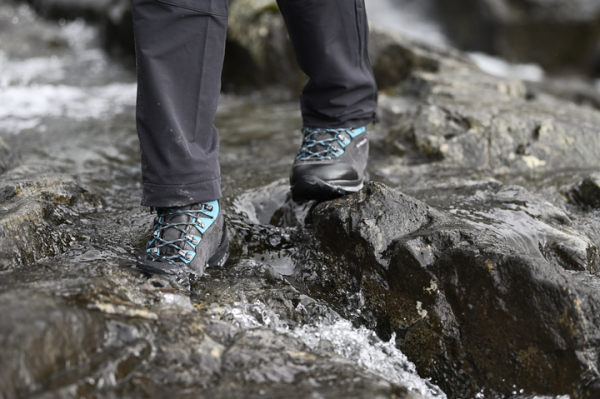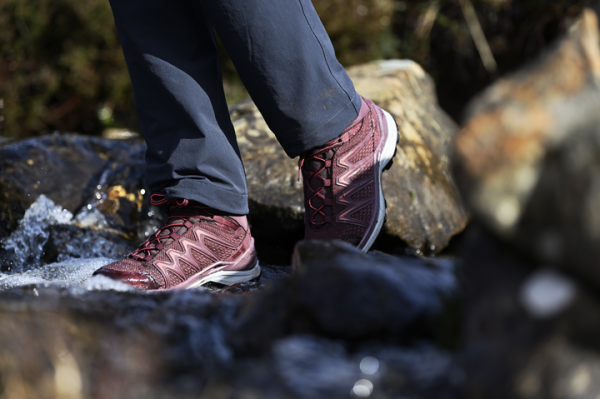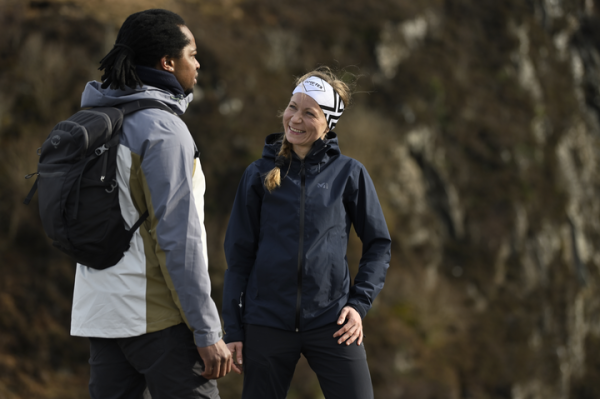You’ve probably been on the trail and seen a fellow hiker powering up the hill like they’re on a mission. Odds are the speedy individual is dressed like a runner, and yet isn’t breaking into a full jog or run. If they’re not running, they're most likely “speed-hiking”, a relatively new sub-genre of traditional hiking, also known as “fastpacking” or “rapid hiking”.
Luckily for most folks curious about jumping into speed-hiking, neither the training nor the equipment is cost-prohibitive, making this activity a great way to get yourself in shape, while putting plenty of trail miles beneath your trail runners.
In this blog post, we’ll go give an overview of speed-hiking, covering its history, health benefits, our recommended training, and of course, the equipment you need to get started speed-hiking this season!
What is Speed Hiking?
Speed hiking has a simple definition you can consider yourself a speed-hiker anytime you’re covering ground at a pace faster than your usual walking speed but not breaking into a run. The main goal of the sport is to cover the most distance and elevation change in the least amount of time. It's also worth noting that most speed hikes occur in a single day, although some intrepid speed-hikers do overnight on their hikes. A great example of that would be the Belgian trail runner who set the Appalachian Trail thru-hike record while speed-hiking in just 41 days, 7 hours, and 39 minutes.
Speed Hiking vs. Trail Running
To put that into perspective, hikers usually cover around 2-3 miles an hour, and trail runners are typically somewhere around 6-8 miles an hour. Between normal hiking pace and trail running is where you’ll find the happy medium of speed-hiking at around 3-5 miles an hour, somewhere between a very quick walk and a slow jog. However, you can spot speed-hikers breaking into a light jog when the trail conditions and trail grade allow for it. Of course, jogging may occur during a speed-hike, but most participants would agree that a brisk walking pace should be the majority of your adventure, lest you risk being defined as a slow trail runner by your fellow hikers.
History of Speed Hiking
The history of speed-hiking probably dates back to the first competitive hiker who bet another that they could get through a hike first. While the sport may have not been given a name, countless passionate hikers have made it their life’s work to set new speed records on famous trails like the Appalachian Trail and Pacific Coast Trail over the years.

Training & Conditioning for Speed Hiking
Most hikers find themselves speed hiking while trying to quicken their hiking pace and stamina, and similar to its cousins, trail running and hiking, training for speed-hiking is relatively straightforward. It involves plenty of - you probably guessed it - walking, running, and general cardiovascular conditioning. The difficulty of the training is very dependent on your goals as a hiker and should be set based on what is safest for your trails and your body. But before we get too technical, we’ll drop a few quick and easy exercises that you can incorporate into your general fitness training that will ultimately benefit your on-trail performance.
How to Improve Your Hiking Speed
Aerobic Conditioning
Hiking, running, jogging, biking, or swimming will all improve your cardiovascular health and ultimately your pace and stamina on the trails. Adding in some hill training, whether on a treadmill or your favorite steep trail will also up your game on the trail. Some hikers like to use a Stairmaster machine to isolate and strengthen their lower bodies.
Bonus Tip: If you want to take your training to the next level, consider wearing your day pack with some added weight to push yourself and greatly improve your stamina.
Reduce the Weight of the Gear You Carry
Weight reduction is no new concept in the outdoors, especially where hiking is concerned. In fact, we here at GORE-TEX brand specialize in the field of reducing weight in our materials and the gear that utilizes them. As you begin your speed-hiking journey, consciously spend time sifting through your pack, layers, and equipment to figure out the bare minimum gear you need to accompany you on the trail. One mantra while reducing weight is to always “Count the ounces, and let the pounds take care of themselves.”
Pay Attention to Your Stride
One simple way to increase your on-trail pace is to adjust your stride and effort depending on the slope in front of you. If you’re hiking uphill, shorten your stride to reduce exertion and cover ground quickly. Inversely, if you find yourself on a downward slope, open up your stride and allow gravity to assist you as you descend, increasing your pace, and lowering the amount of effort needed to cover the trail in front of you.

The Pros and Cons of Speed Hiking
Pros
- Speed hiking provides more rigorous, whole-body aerobic conditioning.
- The increased pace of speed-hiking allows you to cover more distance in less time, which can be great for your health, and for taking in more scenery while outdoors.
- Speed-hiking can be a fun challenge for hikers looking to push their limits.
Cons
- With increased speed, comes the increased risk for common hiking injuries.
- Some hikers who use the pastime to relax may find the competitive nature of speed-hiking a bit preclusive.
- Speed-hiking safely and competitively does require far more conditioning and training than a casual hike.
Speed Hiking Gear Essentials
The general philosophy of speed hiking is all about lightweight and minimalism. Since speed-hikers rarely overnight, you’ll most likely see them simply carrying a small pack with essentials, rocking a pair of lightweight low-rise hiking boots or trail runners, and sporting very light layers. All of this is for a simple reason: it’s difficult to go fast when you’re weighed down with excess gear. Below we’ll go over the essential gear you’ll find in the trunk of most speed hikers' cars at a trailhead parking lot!
Speed Hiking Footwear
Comfort and performance on the trail generally start from the ground up, with your shoes. Many speed-hikers prefer to use trail running shoes because of their lightweight design and the full range of motion they allow for when in use. One major design feature you should consider is the water- and windproof performance of the shoes on your feet. We highly recommend looking for shoes and manufacturers that use GORE-TEX Invisible Fit technology, which allows for incredible moisture-wicking and waterproofing in hyper-lightweight designs.
A Lightweight Day Pack
Like most hikers, speed hikers nearly always carry a pack of some kind to carry their essentials while on the trail. A common load-out would include enough hydration and calorie-dense snacks for the day, extra layers in case of shifting weather conditions, and a first aid kit.
Trekking Poles
Since lightweight trekking poles debuted on the trail, they have been the perfect solution to reducing fatigue and improving stability, control, and rhythm. Due to those benefits, adding a pair of trekking poles to your kit will increase your pace on the trail and reduce the risk of injury. Another benefit of using poles is the use of your arm strength to propel yourself forward. While the difference may seem marginal at first, you’ll certainly find that your legs will thank you for the assistance. also burns more calories/total body workout
Layering for Speed Hiking
Last, but certainly not least, are the layers needed to keep you warm, comfortable, and dry on the trail. As we all know, weather conditions can change at a pin drop in the mountains, so ensuring you have the right, lightweight layers along with you can be paramount to a comfortable, and safe speed-hike.
Base Layers & Mid Layers
Depending on where you’re speed hiking, you may want to consider throwing on light merino wool or polypropylene base layers to keep sweat and moisture away from your skin as you go. Carrying some sort of light insulation can also pay dividends should you find yourself in inclement weather as you ascend into the mountain air.
Outerwear
Whenever you’re out in the elements, it's essential to carry durable waterproof layers in case the skies turn grey or there’s a wet trail in front of you. A trusty set of GORE-TEX waterproof pants and rain shell will suit you perfectly and keep you dry and comfortable as you put the miles behind you.
CHECK OUT OUR PRODUCTS AND TECHNOLOGIES DESIGNED FOR HIKING.

You may also enjoy
View all articles in this category
Hiking and Backpacking Trails
Father’s Day in the Wild: Tips, Tricks, and Stories from Outdoor Dads

Hiking and Backpacking Gear
Associate GORE-TEX Gear Picks

Hiking and Backpacking Gear
Is GORE-TEX Membrane Really Waterproof?
Just how waterproof are GORE-TEX products? The membrane, which comes with a GUARANTEED TO KEEP YOU DRY® promise, is put to the test in these everyday outdoor scenarios.


